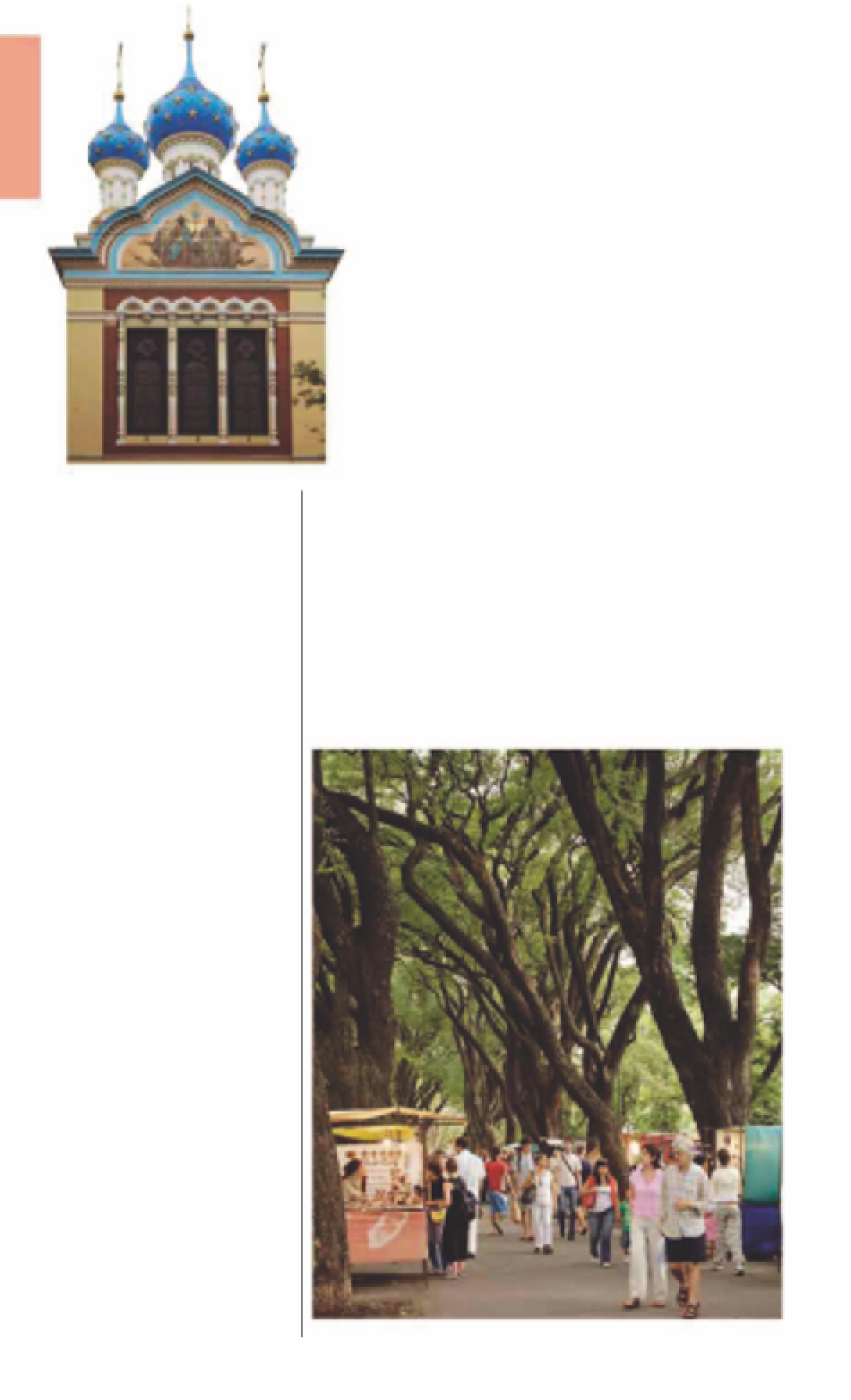Travel Reference
In-Depth Information
7
Parque Lezama
Cnr Brasil & Defensa.
City Map
1 E2.
@
10, 24, 29, 39, 64, 130, 152.
Open
daily.
Many historians claim that this
peaceful park is the likely site
where Pedro de Mendoza made
landfall in Buenos Aires in 1536
while sailing up Río de la
Plata. A monument in the
corner of the park at Brasil
and Defensa records this
event as the “first foundation
of Buenos Aires,” though
Mendoza failed to actually
establish a city. Between the
17th and 19th centuries,
the land belonged to a
number of families, some
with British connections.
In the 1860s the famed
landscape architect José
Gregorio Lezama had a private
park and botanical gardens
laid out here, and many of the
soaring
tipa
and palm trees date
from this period. In 1894 his
estate sold the land to the
municipal authorities, and, three
years later, the Lezama mansion
became the Museo Histórico
Nacional. Unlike Parque 3 de
Febrero
(see p110)
, which is a
magnet for tourists, local and
international, Parque Lezama is
a quiet community area, well
used by San Telmo residents. On
the weekends especially, elderly
porteños can be spotted here
playing chess, while families
picnic and youngsters play,
cycle, and skate around.
Opposite the park, on the
corner of Brasil and Almirante
Brown, is the famous
Mural
Escenográfico Parque Lezama
.
In the popular tradition of
artists such as Antonio Berni,
Quinquela Martín, and
Florencio Molina Campos, it
celebrates iconic characters
of the traditional barrio - the
tango dancer, the soccer
player, the barrio cop, and the
nosy neighbor. Among the
well-known faces here are
crooner Carlos Gardel, soccer
legend Diego Maradona, and
button-accordion virtuoso
Aníbal Troilo.
Parque Lezama is often the
venue for small concerts
hosted by local bands as well
as a weekend crafts fair
organized by artisans, which
stretches north along Calle
Defensa to Avenida San Juan.
The striking sky-blue onion domes
of the Iglesia Ortodoxa Rusa
6
Iglesia Ortodoxa
Rusa
Brasil 315.
City Map
1 E2.
Te l
(011)
4361-4274.
10, 29.
Open
varies
according to church itinerary.
8
@
3pm, second Sun of month; for
tours in English book ahead.
5
5pm
Sat, 10am Sun.
iglesiarusa.org.ar
Work on the Iglesia Ortodoxa
Rusa began in 1901, with a
ceremony attended by
Argentina's president, Julio A.
Roca, and it was completed in
1904. Topped by five onion
domes, the church was built
using raw materials imported
from St. Petersburg in Russia and,
even after its completion, Tsar
Nicholas II continued to send
artworks and other valuables to
decorate the interior. As well as a
variety of Byzantine works and
icons, a painting of the last
Russian tsar, by Argentinian artist
Carlos Gonzalez Galeano, can
also be viewed inside.
The number of domes
represents Jesus and the four
apostles who were the authors
of the four gospels. The
sky-blue color and star motifs
of the domes are intended
to emulate the sky. The chains
that hang between them,
while unnecessary in Buenos
Aires's temperate climate, are
employed in Russia to stabilize
the cupolas in the event of
strong gales.
∑
A stroll through the Sunday crafts fair at Parque Lezama
For hotels and restaurants see pp278-83 and pp288-99




































